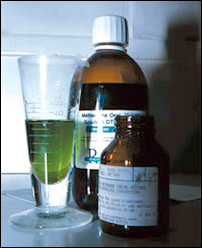Drugs that Treat Opioid Dependency
Opiates are a class of drug that includes street drugs like heroin, as well as prescription painkillers such as oxycodone, oxycontin, fentanyl, vicodin, and lortab. Opiates are a highly addictive class of drugs. These drugs mimic natural painkilling neurotransmitters in the brain, which is what creates the high from opiates. However, in response to long term use of opiates, the brain produces less of these substances, which causes opioid dependency.
When someone is physically dependent on opiates, they experience withdrawal when they run out of drugs. Sometimes, a person who is using opiates heavily can start to withdrawal within a few hours of use. Signs of opiate withdrawal are similar to flu symptoms and include: sweating, goose bumps, nausea, vomiting, diarrhea, and cramping.
Buprenorphine
There are several drugs used to treat opioid dependency. Chief among them is buprenorphine (Suboxone/Subutex). Buprenorphine was not originally developed to treat opioid dependency. It was initially indicated for the short-term treatment of opioid withdrawal. However, much like methadone, it wasn’t long before buprenorphine began to be used as a daily, long-term treatment for opioid dependency. The use of buprenorphine to treat morphine dependency resulted in part from a paradigm shift in the medical community. In 2000, Congress passed a law allowing physicians to prescribe narcotics to treat opioid which allowed access to opiate treatment in a medical setting rather than limiting it to federally approved Opioid Treatment Programs.
Buprenorphine is a long-acting partial agonist that acts on the same receptors as heroin and morphine, relieving drug cravings without producing the same intense “high” or dangerous side effects. However, critics believe that this is merely a form of “drug substitution”- replacing one addictive drug with another.
Methadone
Although buprenorphine has mainly replaced methadone in private practice, federal opioid dependency programs still used methadone. It works similarly to buprenorphine in that it binds to the opioid receptors in the brain. These drugs have the added benefit of preventing the user from attaining the “high” from heroin and other prescription opioids, because they bind more strongly and for a longer period of time, effectively blocking the receptors from binding to any other drug. However, methadone is a full agonist at the opioid receptors, whereas buprenorphine is a partial agonist. To understand the difference, picture a dark room. Heroin and other short term full agonists turn the light completely on, for a short period of time. When the light begins to fade, the user experiences withdrawal and craving. Methadone turns the light completely on, but keeps it on for a longer period of time. Buprenorphine turns the light on halfway. It binds to the receptors and prevents other drugs (like heroin) from binding, but it doesn’t produce the same “high” as methadone or heroin. This feature is responsible for buprenorphine becoming the preferred method to treat opioid dependency.
Naltrexone
Naltrexone is a completely different kind of drug used to treat opioid dependency. It is an opioid receptor blocker. It has proved to be highly effective in reversing the effects of opiate overdose, but its use in the treatment of opioid dependency is limited. This is because naltrexone does nothing to treat withdrawal and craving, it just blocks the effect of heroin and other opiates, so it shows poor patient compliance. And if the patient doesn’t take the drug, it doesn’t work.


